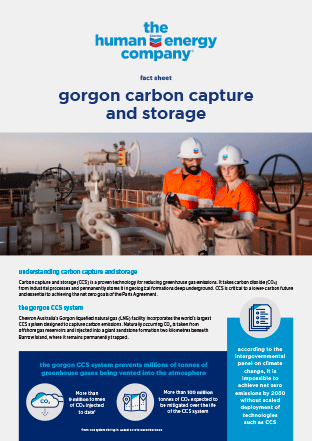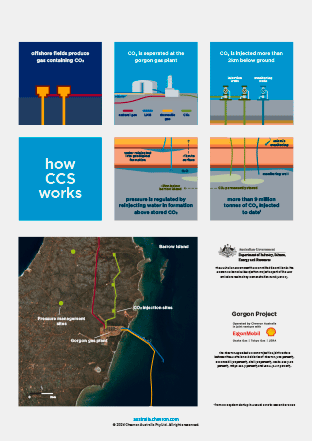media statement chevron commits $2.45m to Australian carbon capture and storage research


Credit: Australian School of Petroleum and Energy Resources.
PERTH, 5 October 2021 – Chevron Australia has contributed more than AUD$2.45 million to the Australian School of Petroleum and Energy Resources in support of carbon capture and storage research.
Located at the University of Adelaide, a new state-of-the-art facility will enable researchers to investigate how carbon dioxide (CO2) is stored within geological formations after its injection into subsurface reservoirs, and how CO2 flows through and interacts with rocks and pore waters on a microscopic scale.
The Australian School of Petroleum and Energy Resources is a world-class institution for petroleum education, training and research and is Australia’s only multidisciplinary school serving the petroleum sector.
Head of School Dr Kathryn Amos said the University of Adelaide is pleased to be partnering with Chevron Australia.
“Carbon capture and storage represents one of Australia’s most significant opportunities to meet net zero carbon emissions,” said Amos.
Dr Kathryn Amos
head of school university of adelaide
"Fundamental and applied research undertaken at the new facility will produce engineering and geoscience outcomes that will help tackle one of society’s most pressing challenges.”
Managing director Mark Hatfield said Chevron is committed to supporting the deployment of carbon capture and storage in Australia and globally.
“The Gorgon carbon capture and storage system has safely injected more than 5 million tonnes of greenhouse gas emissions since starting up in 2019 – the largest volume injected by any system of its kind within such a timeframe,” said Hatfield.
“Chevron is committed to sharing the lessons we’ve learned in this pioneering endeavour and we’re proud to be advancing Australia’s world-leading carbon capture and storage capabilities together with the University of Adelaide.”
Chevron Australia will also support a five-year academic staff position in Carbon Storage Engineering and a three-year Senior Research Fellow position in Carbon Storage Science.
In 2019, Chevron Australia Pty Ltd and the Joint Authority for the Commonwealth/South Australia offshore area entered into a good standing agreement with respect to Exploration Permits EPP44 and EPP45 in the Great Australian Bight. Chevron is committed to working closely with key stakeholders on partnerships that deliver long-term benefits and contribute to Australia’s economic future and energy security, and which satisfy the GSA pursuant to government guidelines.
Chevron is one of the world's leading integrated energy companies and through its Australian subsidiaries, has been present in Australia for more than 60 years. With the ingenuity and commitment of thousands of workers, Chevron Australia operates the Gorgon and Wheatstone natural gas facilities; manages its equal one-sixth interest in the North West Shelf Venture; operates Australia’s largest onshore oilfield on Barrow Island; is a significant investor in exploration; and via Puma Energy delivers quality fuel products and services across Australia, operating or supplying a network of more than 360 retail locations and an extensive 24-hour hour diesel stop network, as well as 14 depots and three seaboard terminals.
Shelby Yazmadjian
Phone: +61 0400 756 149 (Perth)
Cautionary statement relevant to forward-looking information for the purpose of “Safe Harbor” provisions of the Private Securities Litigation Reform Act of 1995
This news release contains forward-looking statements relating to Chevron’s operations that are based on management's current expectations, estimates and projections about the petroleum, chemicals and other energy-related industries. Words or phrases such as “anticipates,” “expects,” “intends,” “plans,” “targets,” “advances,” “commits,” “forecasts,” “projects,” “believes,” “approaches,” “seeks,” “schedules,” “estimates,” “positions,” “pursues,” “may,” “could,” “should,” “will,” “budgets,” “outlook,” “trends,” “guidance,” “focus,” “on track,” “goals,” “objectives,” “strategies,” “opportunities,” “poised,” “potential” and similar expressions are intended to identify such forward-looking statements. These statements are not guarantees of future performance and are subject to certain risks, uncertainties and other factors, many of which are beyond the company’s control and are difficult to predict. Therefore, actual outcomes and results may differ materially from what is expressed or forecasted in such forward-looking statements. The reader should not place undue reliance on these forward-looking statements, which speak only as of the date of this news release. Unless legally required, Chevron undertakes no obligation to update publicly any forward-looking statements, whether as a result of new information, future events or otherwise.
Among the important factors that could cause actual results to differ materially from those in the forward-looking statements are: changing crude oil and natural gas prices and demand for our products, and production curtailments due to market conditions; crude oil production quotas or other actions that might be imposed by the Organization of Petroleum Exporting Countries and other producing countries; public health crises, such as pandemics (including coronavirus (COVID-19)) and epidemics, and any related government policies and actions; changing economic, regulatory and political environments in the various countries in which the company operates; general domestic and international economic and political conditions; changing refining, marketing and chemicals margins; the company’s ability to realize anticipated cost savings, expenditure reductions and efficiencies associated with enterprise transformation initiatives; actions of competitors or regulators; timing of exploration expenses; timing of crude oil liftings; the competitiveness of alternate-energy sources or product substitutes; technological developments; the results of operations and financial condition of the company’s suppliers, vendors, partners and equity affiliates, particularly during extended periods of low prices for crude oil and natural gas during the COVID-19 pandemic; the inability or failure of the company’s joint-venture partners to fund their share of operations and development activities; the potential failure to achieve expected net production from existing and future crude oil and natural gas development projects; potential delays in the development, construction or start-up of planned projects; the potential disruption or interruption of the company’s operations due to war, accidents, political events, civil unrest, severe weather, cyber threats, terrorist acts, or other natural or human causes beyond the company’s control; the potential liability for remedial actions or assessments under existing or future environmental regulations and litigation; significant operational, investment or product changes required by existing or future environmental statutes and regulations, including international agreements and national or regional legislation and regulatory measures to limit or reduce greenhouse gas emissions; the potential liability resulting from pending or future litigation; the company's ability to achieve the anticipated benefits from the acquisition of Noble Energy, Inc.; the company’s future acquisitions or dispositions of assets or shares or the delay or failure of such transactions to close based on required closing conditions; the potential for gains and losses from asset dispositions or impairments; government mandated sales, divestitures, recapitalizations, industry-specific taxes, tariffs, sanctions, changes in fiscal terms or restrictions on scope of company operations; foreign currency movements compared with the U.S. dollar; material reductions in corporate liquidity and access to debt markets; the receipt of required Board authorizations to pay future dividends; the effects of changed accounting rules under generally accepted accounting principles promulgated by rule-setting bodies; the company’s ability to identify and mitigate the risks and hazards inherent in operating in the global energy industry; and the factors set forth under the heading “Risk Factors” on pages 18 through 23 of the company's 2020 Annual Report on Form 10-K and in other subsequent filings with the U.S. Securities and Exchange Commission. Other unpredictable or unknown factors not discussed in this news release could also have material adverse effects on forward-looking statements.


